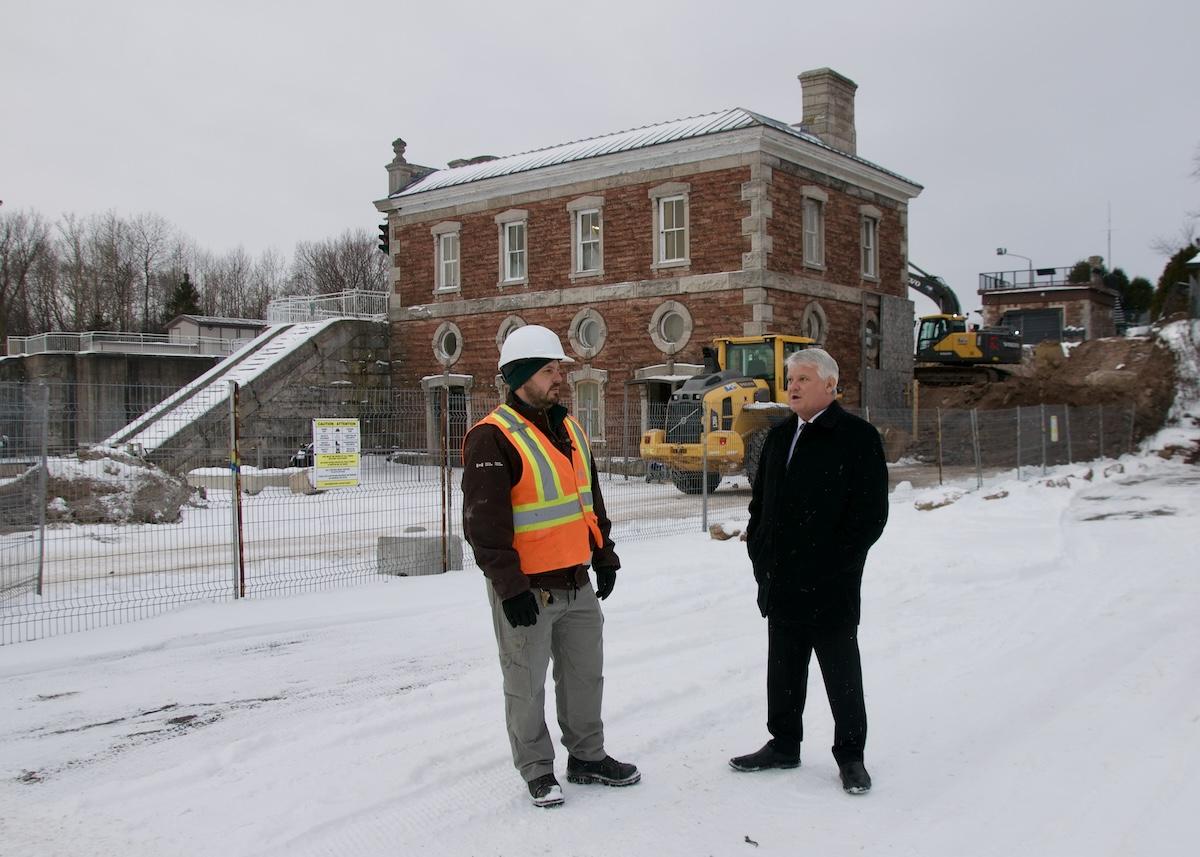
Shown at the Powerhouse building site at the Sault Ste. Marie Canal National HIstoric Site are (from left): Parks Canada Technical Services Officer Brendan Hodgson and Terry Sheehan, Member of Parliament for Sault Ste. Marie and Parliamentary Secretary to the Minister of Labour and Seniors/Parks Canada
The Sault Ste. Marie Canal National Historic Site is getting $7.4 million ($5.5 million USD) in federal funding for critical infrastructure improvements to stabilize and conserve its historic Powerhouse building.
This heritage building allowed the canal to be the first electrically operated lock in the world and is the reason for the designation as a national historic site. It’s undergoing significant structural stabilization work to remediate its deterioration, largely through groundwater mitigation efforts and other improvements including conservation, rehabilitation and construction initiatives.
Work began in late December and is expected to continue for about two years.
Phase one of the Powerhouse project actually began in 2019, with $6.3 million ($4.7 million USD) in federal funding to begin investigative work, which included removing some existing infrastructure to thoroughly explore and understand the water infiltration issues, and to assess future needs to remediate this heritage building.
The Sault Ste. Marie Canal was the longest and first electrically operated lock in the world when it opened in northern Ontario in 1895. It was the last link in a 3,500-kilometre (2,174-mile) all-Canadian waterway stretching from the Atlantic Ocean to the western tip of Lake Superior. It was designated a national historic site in 1987.
The site is undertaking a large revitalization project of its historic core — a cluster of heritage buildings made up of the carpentry shop, stores building, blacksmith's shop, Powerhouse and surrounding landscape.
In June 2022, a new visitor center and exhibit space was opened featuring interpretive elements that outline the impact that construction of the canal had on the First Nation and Métis Nation communities. These include interactive exhibits, interpretive panels, historic photographs, artifacts, a hand-built birch bark canoe on loan from Batchewana First Nation, and an interactive touch-screen that helps people plan their visits. The technical innovations of the canal are demonstrated through a newly designed interactive lock model.
Parks Canada welcomes about 100,000 land-based and 55,000 water-based visitors to the site each year.


